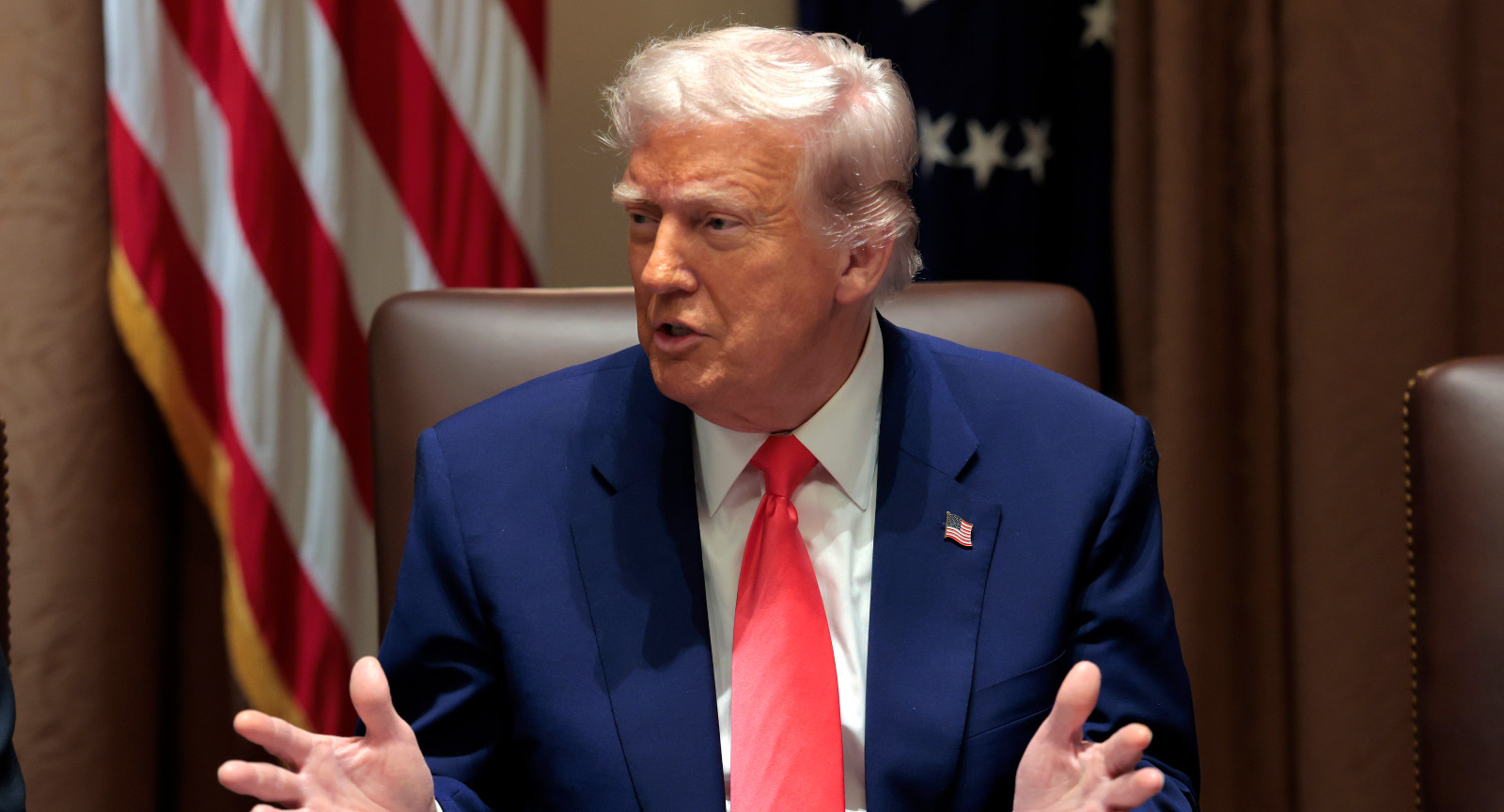Introduction
In spite of sustained criticism from Democrats and a skeptical media, President Donald Trump’s economic agenda is demonstrating concrete gains on several fronts. Long derided as reckless—particularly for his reliance on aggressive tariffs—Trump’s policies are now yielding positive outcomes in national debt reduction, trade negotiations with China, and broader fiscal resilience. This article delves into the data behind these developments, examines how Trump’s tariff strategy is reshaping global commerce, and considers the long-term implications for U.S. economic strength.
1. A New Era in Fiscal Discipline: Shrinking the National Debt
1.1 Unprecedented Slowdown in Debt Growth
A recent analysis by The Washington Examiner reveals that, between January 22 and May 6, 2025, the publicly held U.S. national debt rose by only $37 billion under the Trump administration. By contrast, during the same span in 2024—under President Joe Biden—the debt climbed by more than $478 billion. This represents not merely a slowdown, but a dramatic turnaround in fiscal expansion, effectively reversing the steep upward trajectory seen in the prior year.
1.2 From Accumulation to Reduction
Beyond attenuating debt growth, the Trump administration has in fact reduced the overall federal debt relative to baseline projections. Through targeted spending cuts, disciplined budget management, and revenue windfalls from a surging economy, the fiscal team in the Treasury Department has delivered a net reduction in debt service requirements. While macroeconomic factors—such as robust consumer spending and corporate tax shifts—play a role, the administration’s concerted effort to rein in discretionary outlays has been critical.
1.3 Overcoming Pandemic and Political Headwinds
These fiscal improvements have been achieved against the backdrop of ongoing geopolitical tensions, lingering pandemic-related expenditures, and partisan gridlock in Congress. Despite warnings of economic instability, the administration prioritized a balanced approach: maintaining essential public health funding while clawing back non-critical line items in the federal budget.
2. Tariffs as a Leverage Tool: Forcing the Global Table
2.1 The Rationale Behind 145% Chinese Tariffs
When President Trump first introduced a 145% tariff on select Chinese imports, critics predicted consumer price shocks and retaliatory spirals. In reality, the outsized tariff—focused on categories from electronics components to steel—was designed as a pressure point: a clear signal that the U.S. would not accept unfair trade practices.
2.2 Measuring Early Retaliation and Recovery
Initial Chinese counter-tariffs targeted U.S. agricultural exports and consumer goods, triggering a brief contraction in bilateral trade volume. However, U.S. industries adapted quickly, sourcing alternative suppliers and passing only minimal cost increases to domestic consumers. Supply chain resilience—bolstered by near-shoring and diversification—blunted the feared inflationary impact.
2.3 Exemptions Signal a Shift in Chinese Posture
Most notably, China has begun exempting roughly 25% of U.S. imports—approximately $40 billion in goods—from the 145% tariff. The exemptions focus on critical sectors such as pharmaceuticals, industrial chemicals, and select agricultural products. This move reflects Beijing’s recognition that the sting of Trump’s tariffs outweighs the benefits of resisting them, and underscores the efficacy of tariffs as a tool to compel dialogue rather than simply punish.
3. China’s Strategic Recalibration
3.1 From Rhetoric to Negotiation
Once vilifying U.S. tariffs as “unilateralism” and “economic bullying,” Chinese officials have adopted a more conciliatory tone. A spokesperson for President Xi Jinping has publicly stated that Beijing is “evaluating” the latest U.S. trade proposals, indicating genuine openness to renewed discussions. This pivot marks a departure from the previously entrenched stance of defiance.
3.2 Targeted Tariff Relief and Industry Impacts
By lifting duties on key inputs—such as pharmaceutical precursors and chemical intermediaries—China has eased production costs for its domestic industries. In turn, this signals an interest in stabilizing bilateral commerce and mitigating supply disruptions. U.S. Treasury Secretary Scott Bessent has lauded these concessions as the “first tangible steps” toward a comprehensive trade accord, emphasizing that a phased approach—initial de-escalation followed by broader talks—is the most practical path forward.
4. Tariffs Redefined: Reshaping Global Trade Policy
4.1 A New Precedent for Economic Negotiation
Under Trump’s “America First” doctrine, tariffs have transitioned from rare resort to central bargaining chip. Over 75 countries have reportedly reached out to Washington seeking to renegotiate trade terms, indicating that U.S. resolve is now viewed as a credible threat to imbalanced practices. As a result, many nations are proactively discussing bilateral agreements to avoid protracted tariff wars.
4.2 The Multiplier Effect on U.S. Industries
By leveraging tariffs to raise foreign market access costs, American exporters have secured more favorable terms—higher quotas, reduced duties, or enforceable quality standards—in exchange for tariff relief. This shift rewards industries from manufacturing to agriculture, encouraging domestic investment and innovation.
5. Domestic Economic Fallout: Strengthening Competitiveness
5.1 Lower Debt, Stronger Foundations
A leaner debt profile has multiple knock-on benefits: reduced interest obligations free up budgetary room for infrastructure, research and development, and workforce training—investments that fuel sustained growth. Bond markets have responded with modestly lower yields, signifying enhanced government creditworthiness and consumer confidence.
5.2 Trade Gains and Market Expansion
As China concedes tariff exemptions and signals a willingness to negotiate, U.S. firms gain expanded access to the world’s second-largest economy. New export channels for high-value products—advanced machinery, biotech, and specialty crops—translate into rising revenues and employment. Over time, this diversification bolsters resilience to regional downturns.
6. Facing the Critics: Responses and Future Outlook
6.1 Debunking the Collapse Narrative
Multiple economic commentators who forecast dire outcomes have been forced to revise their projections. Far from triggering runaway inflation or recession, the targeted tariffs have coincided with continued GDP growth above 3%, stable unemployment rates sub-4%, and controlled consumer price indices near Federal Reserve targets.
6.2 Balancing Protectionism and Free-Market Principles
Detractors argue that tariffs inherently conflict with free-market orthodoxy. Yet Trump’s hybrid model—strategic protection for core industries combined with broader deregulation—has demonstrated that judicious state intervention can coexist with robust private-sector dynamism.
6.3 The Road Ahead: Sustaining Momentum
Looking forward, key challenges remain: ensuring long-term fiscal discipline, avoiding protectionist overreach, and navigating emerging geopolitical flashpoints. However, the recent data points to an administration that is learning and adapting—using tariffs not as blunt instruments, but as calibrated levers to achieve specific foreign-policy and economic objectives.
Conclusion: A Lasting Transformation?
President Trump’s economic tenure has defied many expectations. By substantially slowing—and even reversing—national debt growth, and by harnessing tariffs to extract tangible concessions from major trading partners, his administration has laid the groundwork for a more self-reliant, competitive economy.
While debate will persist over the broader merits and risks of tariff-driven policy, the early results are hard to dismiss: fewer dollars borrowed, fairer market access for U.S. exporters, and a palpable shift in global trade dynamics. As negotiations deepen and fiscal gains solidify, Trump’s approach may well become a defining chapter in 21st-century American economic strategy—one where data, rather than ideology, determines the verdict.

Adrian Hawthorne is a celebrated author and dedicated archivist who finds inspiration in the hidden stories of the past. Educated at Oxford, he now works at the National Archives, where preserving history fuels his evocative writing. Balancing archival precision with creative storytelling, Adrian founded the Hawthorne Institute of Literary Arts to mentor emerging writers and honor the timeless art of narrative.
